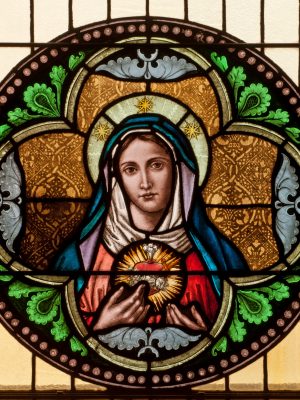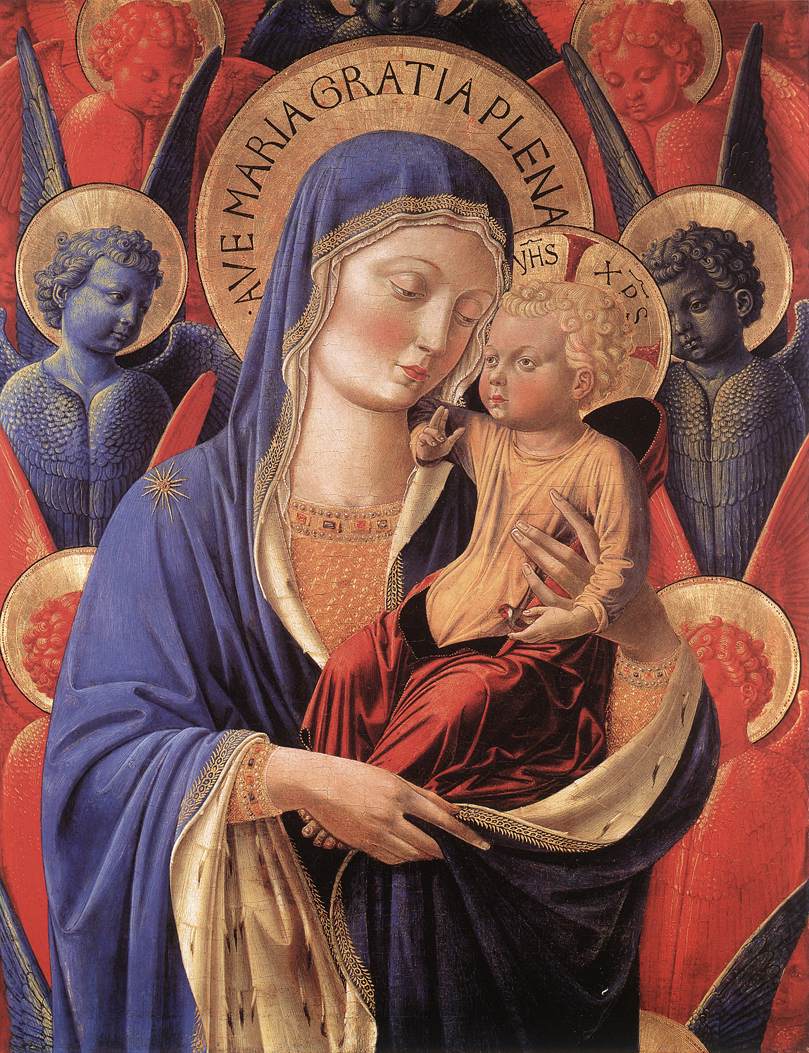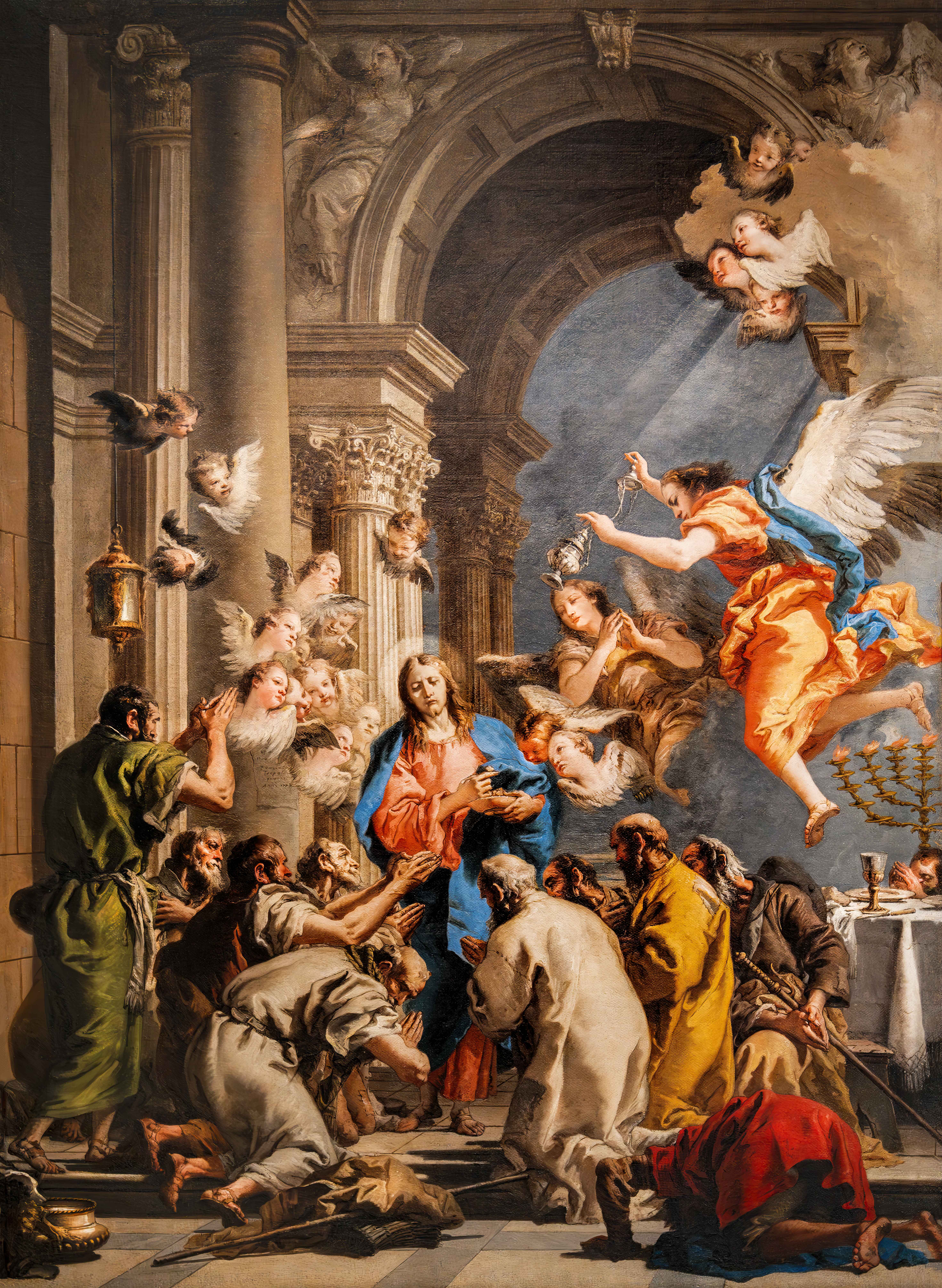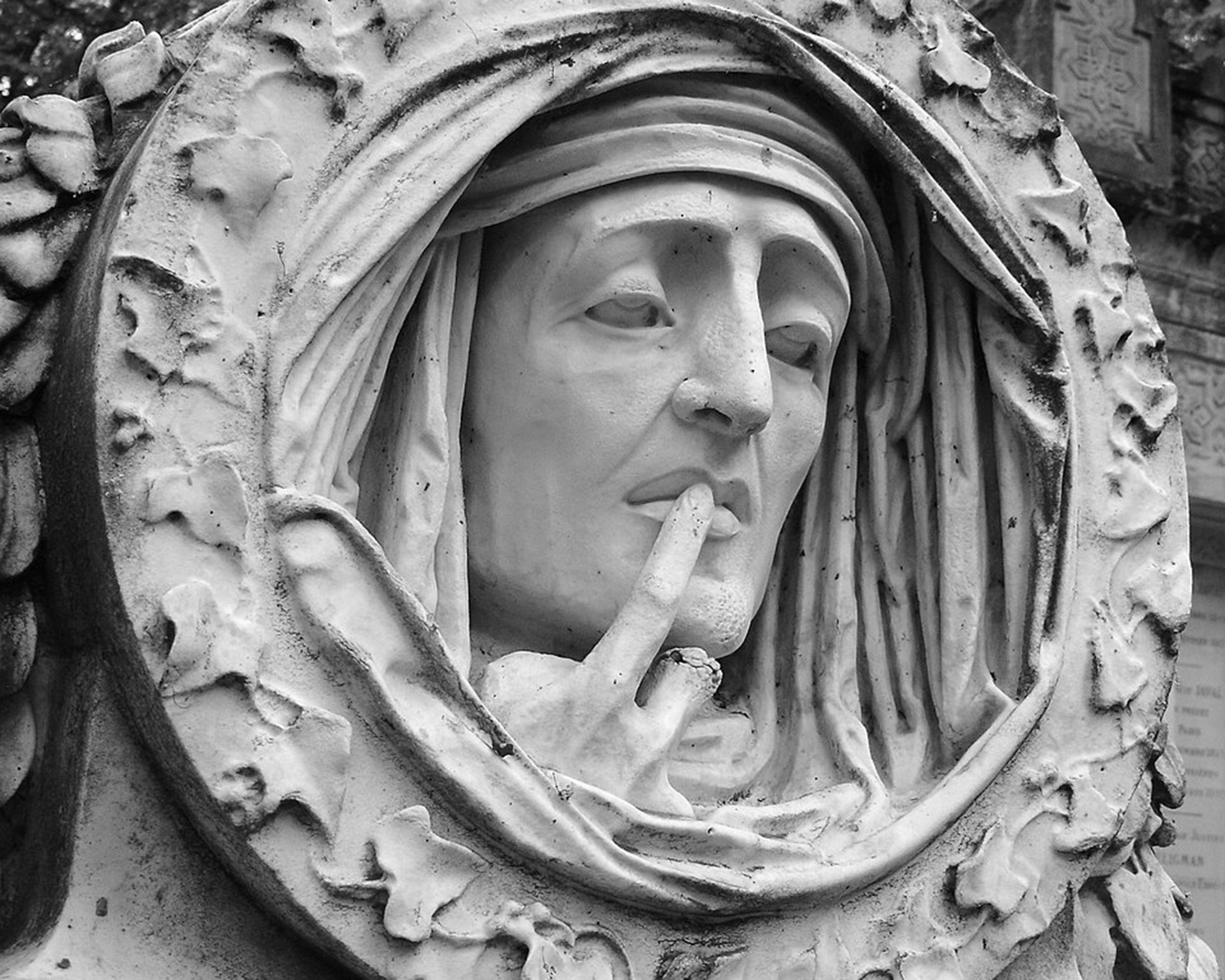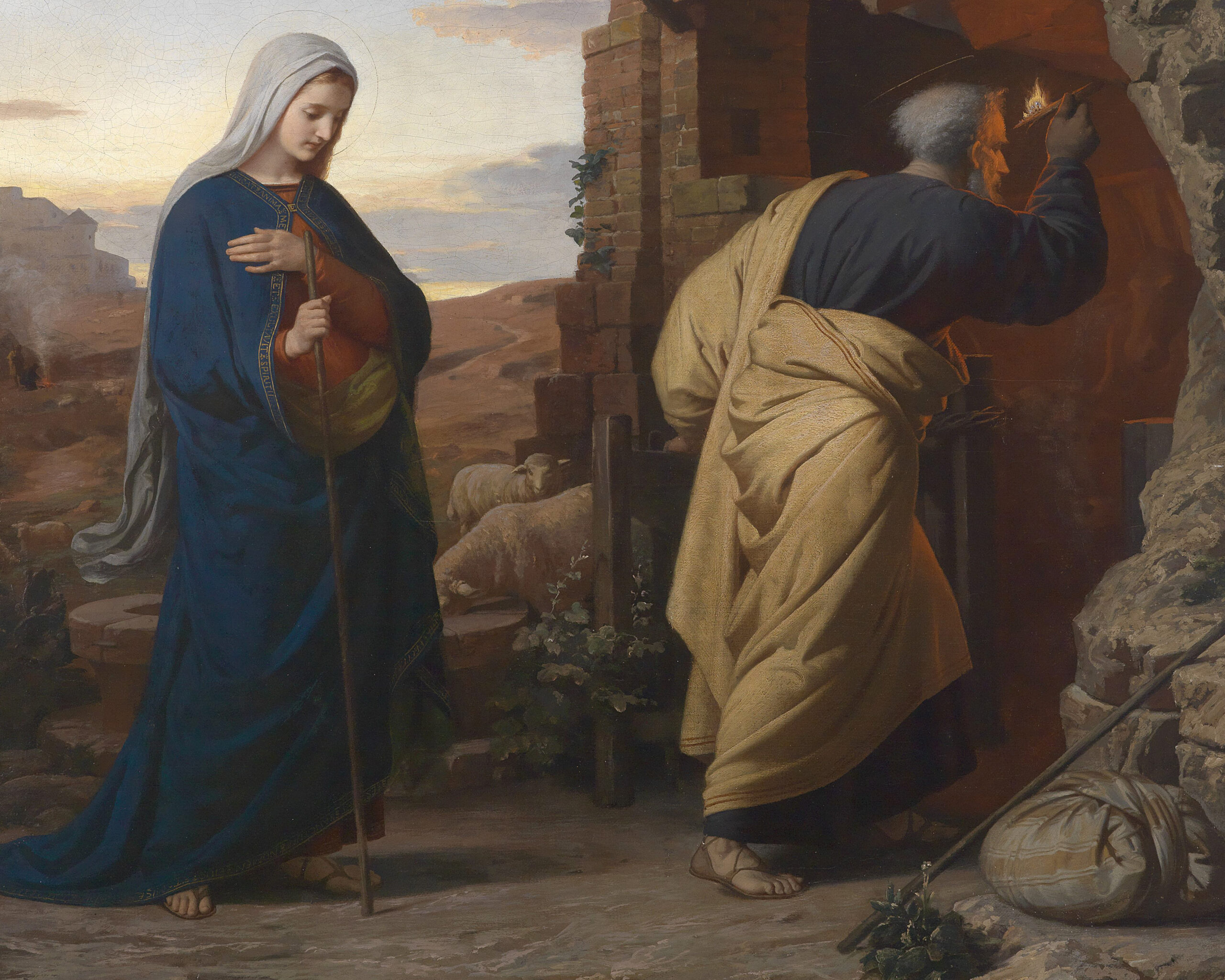“Mary’s greatness consists in the fact that she wants to magnify God, not herself.”
-Benedict XVI
Not much is known about the life of Mary, the woman chosen to be the Mother of Christ.
Nevertheless, she is the most famous of women in history, guardedly revealed to us by the inspired books. Yet she is the best known personage in the Bible, save Christ alone, and there is none other, beside Christ, who appeals to so many hearts.
Mighty temples and cathedrals hovering over lands in both East and West have been built and dedicated through the centuries in her honor. These are seen today in diverse cities of the world such as Jerusalem, Rome, Paris, Moscow, Washington, D.C. and everywhere else.
The Memory of Mary
Mary’s memory is a source of singular importance for knowing Christ. She is not only a witness to the Incarnation which she knowingly cooperated, but she also followed step by step the gradual self-revelation of her son during His lifetime on earth.
Therefore, Mary’s memory is an incomparable source. For this reason the primitive Church accorded to her such a high station evident in the texts of early Christian worship, a point established and admitted by historians of the paleo-Christian era.
Indeed, one cannot say that Mary was overlooked by the early Christians with her memory given such pride of place on major liturgical feasts. Over the centuries the majestic forms of universal devotion to Mary have continued and are expressed the world over, especially in the universal liturgy and with the prayers and devotions of the local Christian communities in the Holy Land.
This proof of early devotion of the Christian faithful to Mary is of great historical significance. It led to the earliest expressions of Mary in the arts. This devotion produced over the centuries both prayers and poetry, literature and paintings, with a special flowering seen on the European continent.
The liturgical arts commemorate Mary in the text of every Mass, making mention of her more than once in the Extraordinary Form of the Roman Rite. Apart from the Confiteor in which she is mentioned twice, there are three references to Our Lady in the “ordinary” parts of every Mass.
First in the Suscipe (Receive, O Holy Trinity prayer) of the Offertory, secondly at the first commemoration of the saints in the Roman Canon at the Communicantes (We pray in union with prayer), and thirdly in the Libera nos (Deliver us, we beseech Thee prayer) after the Our Father.
The visual arts have also taken her as subject for nearly two-thousands years, tirelessly renewing works in her honor to express love for Christ. These images often depict her as Mother and Queen, a custom that is a historic reflection of ancient Hebrew culture, where the mother of the King was Queen, not his consort (wife).
The oldest known depiction of Mary is seen by pilgrims and tourists inside the Roman Catacombs of Priscilla on the Via Salaria in Rome, burial chambers of early Christians that were excavated between the second and fifth centuries AD.
Inside is a painted image in stucco on a ceiling niche that depicts Mary with the Christ Child on her knees. This ancient image dates to the end of the second or the beginning of the third century AD, revealed by the primitive Pompeian style of the artwork.
Indeed, in Europe not only paintings but also the historic corpus of literature have taken Mary, from earliest times, as a subject of such venerable extent that a mere Marian bibliography would take many hundreds of volumes.
How enormously disproportionate in light of the textual evidence and tradition upon which devotion to Mary rests must seem the rejection of her lofty person and unique role by so many mainline Protestant denominations.
Mary in the Gospels
The Biblical references to Mary, few there are, provide the basis of our knowledge of the one character in the Bible apart from Jesus himself, who is the most appealing of all figures depicted in the Holy Writ.
References to Mary in the Scriptures are found in the beginning and end of the Bible. They include Genesis 3:15 as well as Revelation 12 (where the Book of Revelation reveals the component of the mystery of Sacred Liturgy).
After reading these passages it comes as no surprise the mystical aspect of Mary’s role. The Biblical references to Mary contain prophetic foretelling of a glory and sorrow that was to be intermingled in her life.
In St. Mark’s Gospel (believed by many to be the first and oldest of the Gospels), the first reference to Mary is when she and His relatives go looking for Him and Christ seizes the opportunity to give a lesson on the greater dignity of spiritual relationship (Mark 3:31-35). Mary is later mentioned by name when Jesus returns to Nazareth and the people refer to Him as “the Son of Mary” (Mark 6:3).
Mention is made of Mary at the beginning of the Gospel narratives of St. Luke and St. Matthew, seen with the infancy narratives of Christ. Later in these Gospels are illustrated some poignant allusions to her that are incidental to the accounts of the public life of Christ.
Mary is drawn in beautiful silhouette in St. John’s Gospel in his description of the Passion of Our Lord on Mt. Calvary, where she stands with great courage with the other women at the foot of the cross to the end (John 19:25-27).
Despite how few and brief are the unexpanded illusions to Mary in the Gospels, they still contain within themselves the ability to develop a powerful image of Mary as a silent witness and steadfast mother.
This is similar to the mustard seed, which is described as the smallest of all seeds. However, once planted it is destined to grown into a large tree where birds flock to build their nests in safe harbor and peaceful harmony, finding a home under the protection of an array of sturdy branches.
On many occasions Mary is mentioned in post-Biblical writings, but most of these are ignored by authoritative Biblical scholars because they are questionable, being apocryphal and/or pseudo-epigraphical.
Mary at Cana
Mary’s message is keenly illustrated at the time when the public life of Christ began at the marriage feast of Cana. Mary’s place in that public ministry was singularly small, while her presence is felt not far from Christ, while playing no outstanding part except for that all-important role of mother.
This was the one occasion when the Gospel showed Mary at the forefront of the ministry of Christ, at the very beginning when at her behest Christ performed His first public miracle. The marriage at Cana is an event recorded only by St. John the Evangelist.
The marriage feast at Cana is the only occasion in the Scriptures when Mary is mentioned before Christ.
Mary at Cana is shown to us in a way expressive of her complete faith in Jesus. From henceforth in the Scriptures there is but little trace of her. Her last recorded words stand out: “Whatsoever He shall say to you, do ye.”
John 11: 1-12 relates the story thus: “And on the third day there was a marriage at Cana of Galilee, and the Mother of Jesus was there. Now Jesus and his disciples were also invited to the marriage. And the wine failing, the Mother of Jesus saith to him, ‘They have no wine.’ And Jesus saith to her, ‘What have I to do with thee, O woman? My hour is not yet come.'”
His Mother saith to the servants, “Whatsoever he shall say to you, do ye.” Now six stone water-jars were set there, after the Jews’ manner of purification, each holding two or three firkins. Jesus saith to them, ‘Fill the jars with water.’ And they filled them to the brim. And he saith to them, ‘Draw now, and take to the chief steward.’”
And they did so. And when the steward had tasted the water become wine – and he knew not whence it came, but the servants, who had drawn the water knew – he calleth the bridegroom and saith to him, “‘Every man setteth forth good wine first, and after they have drunk freely, then that which is poorer, but thou has kept the good wine until now.’ This beginning of his signs did Jesus at Cana of Galilee; and he manifested his glory, and his disciples believed in him. After this he went down to Caparnaum, he and his Mother and his brethren and his disciples; and there they remained not many days.”
After this episode as time progressed the Scriptures seem to indicate a voluntary separation of Christ from His mother, almost as if to fulfill His mission He had to break every tie.
Mary was also present to receive the miraculous honor of the Holy Spirit’s descent on the day of Pentecost after the death of Christ. This was among 120 followers, representative of the nations of the ancient world according to St. Jerome.
As wine was a symbol of mirth and health to the local people, it was important their need was filled in the celebration of so holy a mystery. Our Lady stepped into the breach to intercede, summoning her son to work a miracle and save the day, also showing the dignity of so sublime a sacrament (Holy Matrimony).
It was not the wine servant who noticed the shortage — it was Mary, as she notes our needs before we ourselves feel them. It is precisely from meditating upon the Scriptures that the historical mother of Jesus is revealed, our mother who looks upon us with sympathy and equity. May we find a true patron and mother in Mary and may we find her not only in the readings of the Scriptures but also in the liturgy and arts, the same fonts where the earliest Christians encountered her.


